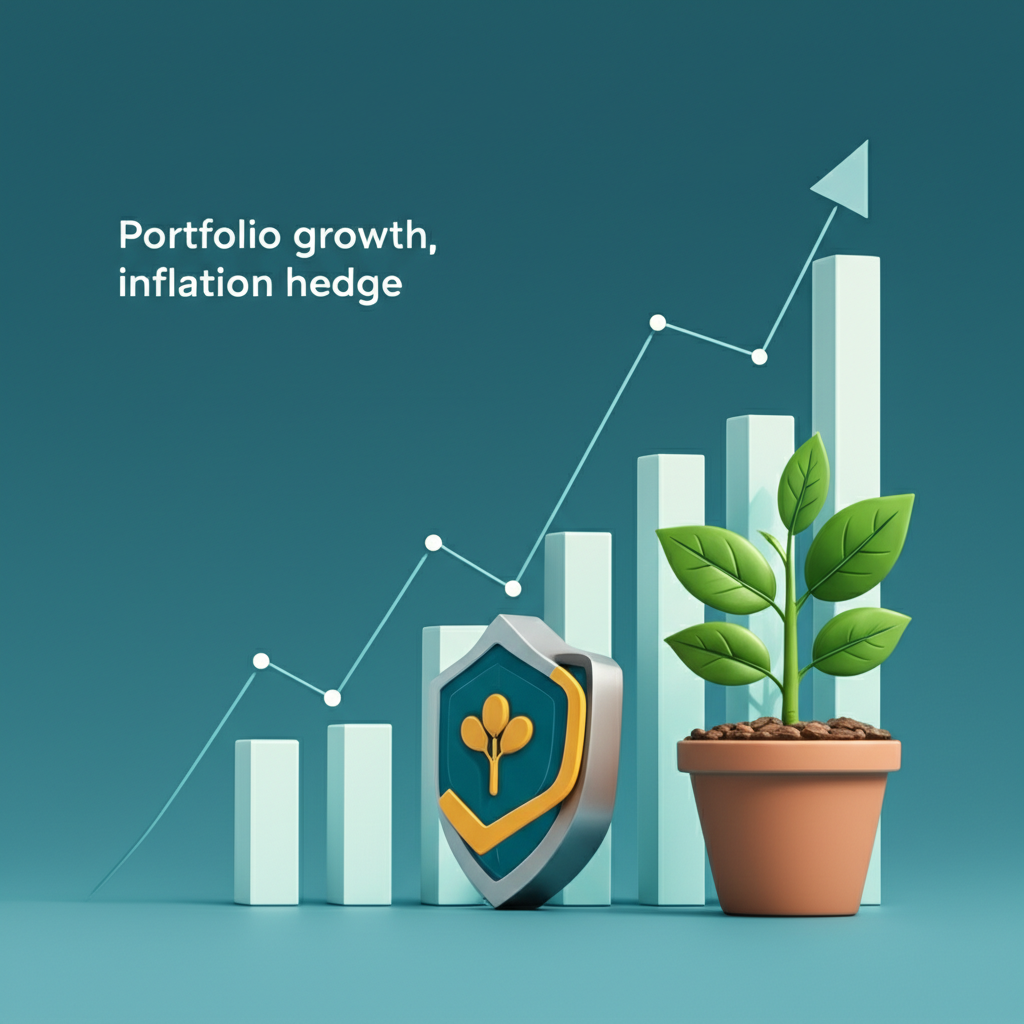Introduction: Your Comprehensive Commodities Investing Guide for the United States (2025)
In today’s fast-paced financial world, commodities form the essential raw materials driving the global economy. For savvy investors across the United States, incorporating these assets into your portfolio can provide smart diversification and solid growth potential as 2025 approaches. This guide acts as your roadmap, delivering in-depth analysis on commodities investing customized for the U.S. market. We’ll cover the basics of what commodities entail, their importance to your investments, practical ways to get involved, and key strategies for handling the market’s ups and downs. Whether you’re just starting out or looking to sharpen your approach as an experienced trader, this resource arms you with the tools to make smart choices and safeguard against risks in the shifting U.S. commodities scene.

Commodities investing isn’t just about chasing trends-it’s about building resilience in your financial strategy. With economic uncertainties on the horizon, from inflation pressures to supply chain shifts, these tangible assets can help balance out more conventional holdings like stocks and bonds. By the end of this guide, you’ll have a clearer path to integrating commodities effectively, drawing on real-world U.S. market dynamics to inform your moves.

What Are Commodities? A Core Understanding for US Investors
At their heart, commodities are basic raw materials or agricultural goods that buyers and sellers trade on open markets. They’re uniform in quality and pricing, so a unit of crude oil from Texas is just as good as one from the Middle East. These resources fuel everything from heavy industry to everyday consumer needs, affecting costs for fuel at the pump and food on your table. For investors in the U.S., grasping commodities means seeing how they tie into the strength of the American economy and worldwide trade, shaping everything from inflation rates to business earnings and international relations.
Hard vs. Soft Commodities: Key Differences
Investors typically divide commodities into two broad categories, each with its own set of influences and opportunities.
- Hard Commodities: Extracted or mined from the ground, these include energy sources and metals. Think crude oil, natural gas, gold, silver, copper, and platinum. As non-renewable assets, their availability often hinges on political developments, mining expenses, and rules around environmental protection, which can create supply squeezes or surpluses.
- Soft Commodities: Grown on farms or raised as livestock, such as corn, wheat, soybeans, coffee, sugar, and cattle. While renewable, they’re prone to swings from weather events, pests, seasonal changes, and shifts in international trade rules. This unpredictability often leads to sharper price fluctuations compared to hard commodities.
These distinctions help shape how you might allocate them in your portfolio, balancing stability with growth potential based on current market signals.
Why Consider Commodities Investing in the United States for 2025?
As U.S. investors eye 2025, commodities present strong reasons to add them to the mix, from buffering against economic shifts to tapping into worldwide demand.
- Portfolio Diversification: These assets don’t always move in sync with stocks or bonds, so when equities falter, commodities might rise, smoothing out your overall risk and protecting against big market drops.
- Potential Hedge Against Inflation: When raw material costs climb, it pushes up prices across the board, fueling inflation. Commodities usually gain value in these times, helping preserve your wealth as the dollar’s buying power weakens.
- Opportunities During Economic Cycles: Various commodities shine in different phases-for example, metals like copper boom with infrastructure booms and economic upswings, while gold steps in as a refuge amid turmoil. Timing these patterns can position you for better returns.
- Historical Performance Trends in the US Market: Over the years, commodities have delivered impressive gains during demand surges, shortages, or when the dollar softens. Though history doesn’t guarantee repeats, their predictable cycles reward those who stay vigilant.
Beyond these benefits, the U.S.’s role as a major producer in energy and agriculture adds a layer of domestic stability to global exposure.
Types of Commodities to Invest In
The commodities arena spans energy, metals, and agriculture, each driven by unique forces. U.S. investors should zero in on how these play out locally and abroad to spot the best fits.
Energy Commodities
Key players here are crude oil, natural gas, and gasoline, whose values swing with worldwide supply chains, international conflicts, decisions from groups like OPEC, and the push toward cleaner energy. In the U.S., homegrown factors such as shale drilling output, government oil reserves, and driving habits also weigh in. Gaining a stake in energy can link your portfolio to broader industrial expansion and consumer trends.
Precious Metals
Gold, silver, and platinum stand out as go-to options during shaky times, offering a buffer against economic woes or global tensions. Gold especially shines as a reliable value holder, countering inflation and weakening currencies. Silver and platinum double as industrial essentials, tying their fortunes to factory output. For Americans, these provide a physical counterweight to digital-heavy investments when volatility strikes.
Industrial Metals
Copper, aluminum, and nickel power construction, electronics, and heavy manufacturing. Their prices track economic momentum, especially from big players like China and the U.S. With domestic infrastructure pushes and post-pandemic recovery, demand could spike, opening doors for timely investments.
Agricultural Commodities
Essentials like corn, wheat, soybeans, coffee, and sugar respond to harvests, weather disruptions, export flows, government policies, and even biofuel mandates. This area connects you to rising global food needs driven by population growth, but expect turbulence from droughts or trade barriers.
How to Invest in Commodities in the United States (2025)
Americans have multiple paths to commodities, ranging from simple entry points to more hands-on tactics, each balancing ease, cost, and involvement.
Commodity ETFs & ETNs
Exchange-Traded Funds and Notes make commodities approachable for everyday investors, blending variety with straightforward trading.
- How they work: ETFs often bundle futures or actual holdings like gold bars, while ETNs mimic index performance through a debt structure.
- Advantages: Enjoy quick trades on stock exchanges, spread risk across assets, and no need for specialized knowledge.
- Key considerations for US investors: Watch for fees that eat into returns, how well the fund tracks real prices, and futures quirks like contango, where future costs outpace current ones, potentially dragging on long holds.
For those new to the game, starting with broad-based ETFs can build confidence without overwhelming complexity.
Commodity Futures Contracts
These are commitments to trade a set amount of a commodity at a fixed price later on, offering direct market access.
- Define futures: Standardized deals handled on exchanges, ensuring reliability and oversight.
- Explain leverage and risk: With built-in leverage, even small shifts can multiply profits or losses, appealing to pros but risky for novices.
- Regulatory oversight (CFTC): The Commodity Futures Trading Commission keeps U.S. markets fair. The CFTC website offers insights into rules and protections.
Commodity Stocks
By buying shares in firms that mine, drill, or farm commodities, you get indirect play without handling the assets yourself. This covers miners for metals, energy explorers, and agribusiness giants. You’ll ride commodity waves plus company perks like strong leadership or efficient operations.
Mutual Funds with Commodity Exposure
These funds pool resources into commodity-linked investments, guided by experts.
- Actively managed funds: Managers actively pick winners to beat market averages.
- Professional management, diversification: Get broad coverage and seasoned advice, though expect steeper fees for the expertise.
They’re ideal if you prefer a set-it-and-forget-it style over daily monitoring.
Options on Commodity Futures/ETFs
Seasoned traders use options to bet on or protect against price moves, buying the right to trade at set terms without commitment. This adds flexibility for hedging portfolios or speculating with controlled risk.
Risks and Considerations for US Commodities Investors in 2025
Commodities can boost returns, but U.S. investors need to weigh the pitfalls head-on.
- Volatility: Prices jump wildly from supply gluts, demand drops, news events, or economic reports.
- Geopolitical Risks: Sourcing from volatile areas exposes supply to wars, embargoes, or regime shifts.
- Supply and Demand Dynamics: A fine balance tips easily-hurricanes ruining crops or production halts can reshape markets overnight.
- Leverage Risk (in Futures): Amplified exposure means quick wins but also fast losses if the market turns.
- Contango and Backwardation: Contango hikes future prices over spot, hurting ETF holders over time; backwardation does the opposite, aiding rollovers.
- Storage Costs: Holding physical goods racks up fees for safekeeping and transport, though most skip this for financial products.
- Regulatory Changes in the United States: Updates from bodies like the CFTC or SEC on environment, trade, or finance can ripple through prices and access.
To manage these, consider position sizing and stop-loss orders, and always align with your risk profile.
Choosing a Commodities Broker in the United States (2025)
Picking the right platform is crucial for seamless trading. In 2025, U.S. folks should prioritize safety, tools, and affordability.
Key Factors for US Investors
Here’s what to evaluate:
- Regulatory Compliance (NFA, CFTC): Confirm oversight from the National Futures Association and CFTC for security and fairness.
- Platform Features: Seek user-friendly setups like MT4 or MT5 with charts, indicators, and fast orders.
- Fees and Spreads: Lower commissions and tight spreads preserve more of your gains.
- Available Commodities: Ensure coverage of your targets, from oil to grains.
- Customer Support: Round-the-clock help from experts keeps you on track.
- Educational Resources: Tutorials, videos, and analysis build your edge, especially early on.
- Mobile Trading: Solid apps let you trade anywhere without missing beats.
Top US-Friendly Commodities Brokers for 2025
| Broker | Key Advantages for US Investors | Regulatory Compliance |
|---|---|---|
| 1. Moneta Markets | Extremely competitive spreads across a wide range of commodities, robust MT4/MT5 platforms, excellent educational resources, dedicated customer support for US clients, and a user-friendly interface suitable for both beginners and advanced traders. They offer a diverse selection of instruments beyond just forex, making them ideal for commodity exposure. | Holds an FCA license; regulated internationally with strong oversight; provides services to US clients through compliant pathways. |
| 2. OANDA | Renowned for precise pricing, advanced trading tools, extensive market research, strong regulatory compliance (NFA, CFTC), and a wide array of currency pairs and CFDs, including commodities, for US investors. | NFA, CFTC, FCA, ASIC, IIROC, MAS, FSA |
| 3. IG | One of the largest and most established brokers globally, offering a vast array of markets including commodities, excellent platform options (including proprietary and MT4), comprehensive educational resources, and strong regulatory oversight, making it a reliable choice for US traders. | NFA, CFTC, FCA, ASIC, MAS, FSCA, JFSA, FINMA |
Commodities Market Outlook for 2025 in the United States
Heading into 2025, U.S. commodities face a mix of challenges and prospects shaped by policy, global events, and innovation.
- Potential Economic Trends: Fed rate moves, lingering inflation, and economic vigor will drive demand-strong growth lifts energy and metals, while inflation bolsters gold.
- Geopolitical Impacts: Tensions in key regions could disrupt flows of oil, grains, and metals, spiking prices unpredictably.
- Supply Chain Developments: U.S. efforts to bring manufacturing home may favor local resources, while stabilizing global logistics could temper costs.
- Green Energy Transition Effects: Renewables growth pressures fossil fuels but ramps up needs for battery metals like lithium alongside copper. The US Energy Information Administration (EIA) delivers key forecasts on these shifts.
- Expert Predictions: Expect choppy waters but chances from Asia’s rise, tech in farming, and clean energy pushes. Climate effects will keep ag markets on edge.
Tracking sources like the World Bank for reports can sharpen your forecasts and timing.
Conclusion: Strategizing Your Commodities Investments in the US for the Future
For 2025, commodities offer U.S. investors a vital tool for spreading risk and chasing gains, shielding against inflation while riding global waves. From distinguishing hard and soft types to picking ETFs, futures, or stocks, a well-rounded plan matters most. Sure, volatility and world events pose hurdles, but smart choices-like teaming with a broker such as Moneta Markets that fits your style-can turn them into advantages. Focus on mixing assets wisely, basing decisions on solid research, and keeping up with trends to craft a portfolio that’s tough yet poised for expansion.
Frequently Asked Questions (FAQ) About Commodities Investing in the United States
How do beginners invest in commodities in the United States?
Beginners in the United States can start investing in commodities through more accessible methods like Commodity ETFs (Exchange-Traded Funds) or mutual funds with commodity exposure. These options offer diversification and professional management without directly trading complex instruments like futures. Investing in commodity-related stocks is also a straightforward way to gain indirect exposure.
What commodity is best to invest in for US investors in 2025?
There’s no single “best” commodity, as market conditions constantly change. For 2025, many analysts suggest watching precious metals like gold for stability amid economic uncertainty, and industrial metals like copper due to global infrastructure spending and the green energy transition. Energy commodities (oil, natural gas) will also remain critical. Your best choice depends on your risk tolerance and market outlook, always considering diversification.
Is investing in commodities a good idea for a diversified US portfolio?
Yes, absolutely. Commodities can be an excellent addition to a diversified US portfolio. They often have a low correlation with traditional assets like stocks and bonds, meaning they can perform well when other asset classes are struggling. This can help reduce overall portfolio risk and act as a hedge against inflation, enhancing your portfolio’s resilience.
How can I invest in commodities ETFs from the United States?
To invest in commodities ETFs from the United States, you simply need a brokerage account. You can then search for and purchase ETFs that track specific commodities (e.g., gold, oil) or a basket of commodities. Brokers like Moneta Markets offer access to a diverse selection of instruments, including CFDs on various commodities, which can mirror ETF performance in a flexible trading environment.
What are some common commodities investment examples for US traders?
Common examples include buying shares of an oil & gas company (indirect exposure to energy), investing in a gold ETF (direct exposure to precious metals), trading corn futures contracts (direct exposure to agriculture), or using a CFD broker like Moneta Markets to speculate on the price movements of crude oil or silver.
How do US investors buy commodities online?
US investors can buy commodities online through various methods. This includes opening an account with a brokerage firm to buy commodity ETFs or stocks of commodity-producing companies. For more direct exposure, you can trade commodity futures or CFDs (Contracts for Difference) through specialized brokers. Platforms like Moneta Markets allow US clients to trade CFDs on a wide range of commodities directly online, offering competitive spreads and advanced trading tools.
What are the risks of commodities investing for United States citizens?
Key risks for US citizens include high price volatility due to supply/demand shifts and geopolitical events, leverage risk in futures trading, and the impact of contango/backwardation on futures-based investments. Additionally, regulatory changes in the US and global economic downturns can significantly affect commodity prices. It’s crucial to understand these risks before investing.
Are there specific tax implications for commodities investing in the US?
Yes, commodities investing in the US has specific tax implications. For instance, futures contracts are often taxed under Section 1256 of the IRS code, meaning 60% of gains are taxed at the long-term capital gains rate and 40% at the short-term rate, regardless of holding period. Commodity ETFs and stocks are generally taxed as ordinary income or capital gains. It’s advisable to consult with a tax professional to understand your specific obligations.



No responses yet